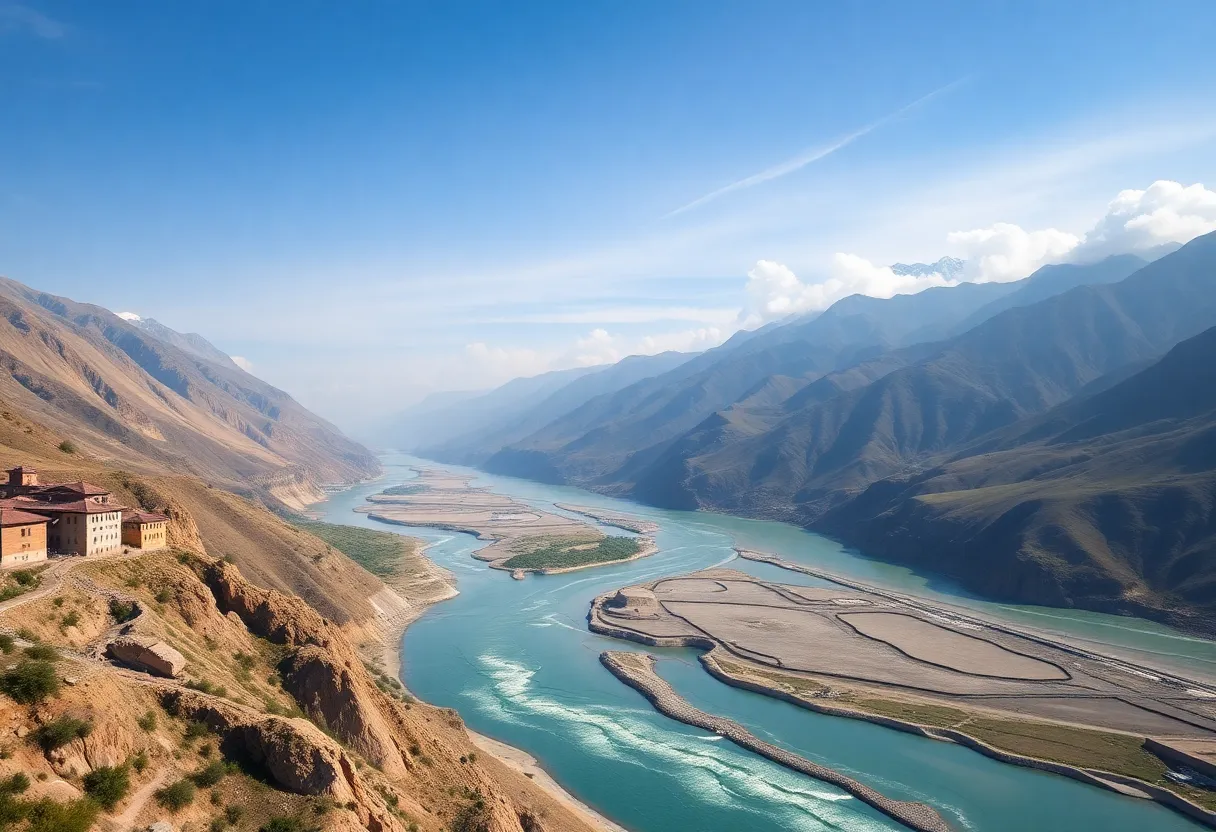News Summary
China has launched the construction of a mega-dam on the Yarlung Zangbo River in Tibet, projected to become the world’s largest hydropower project. The initiative aims to boost renewable energy output and address both local and regional energy needs. However, it raises geopolitical concerns, particularly from India, regarding its potential effects on downstream water supply. Environmental organizations are also voicing worries about the ecological impact on the Tibetan Plateau, emphasizing the need to balance energy development with environmental preservation.
Lhasa, Tibet – China has initiated the construction of a mega-dam on the Yarlung Zangbo River in Tibet, which is set to become the world’s largest hydropower project. The ambitious initiative, aimed at addressing both energy demands and environmental goals, will include the development of five hydropower stations and is projected to greatly enhance China’s renewable energy capabilities.
The Yarlung Zangbo River, known as the Brahmaputra in India and the Jamuna in Bangladesh, has significant geopolitical implications due to its critical role in the water supply for various downstream countries. The construction project was officially launched with the attendance of Premier Li Qiang, and it was reported that the Chinese government secured approval for the venture in December of the previous year. The estimated cost of the entire project is around 1.2 trillion yuan, equating to approximately $167.1 billion.
As part of China’s strategy to achieve carbon neutrality, the dam is expected to primarily serve electricity needs in other regions while also addressing local power requirements in Tibet. The enhanced energy output is anticipated to reach up to 300 billion kilowatt-hours annually, positioning it as a significant contributor to the national grid.
India has expressed concerns regarding the potential repercussions of this mega-dam on its downstream territories, particularly in January when it prompted a request for China to ensure that its upstream activities would not negatively impact its interests. Despite these concerns, China’s Ministry of Foreign Affairs maintains that the project has been designed to avoid adverse effects on downstream nations and that channels of communication will remain open.
The Yarlung Zangbo River runs close to the contested border between China and India, adding a layer of complexity to the endeavor, especially given the historical context of China’s annexation of Tibet in 1950. This annexation has led to the construction of multiple dams in the region, leading to rising environmental concerns regarding the ecological impact on the Tibetan Plateau, a critical water source for approximately 1.3 billion people spanning ten countries.
Environmental organizations have raised alarms about irreversible damage to the ecosystems of the Tibetan Plateau due to the dam’s construction, echoing fears about the displacement and welfare of local communities. While the Three Gorges Dam on the Yangtze River has faced drama from the displacement of around 1.4 million people, assessments indicate that the Yagen Hydropower Station in 2015 displaced around 2,000 individuals in Tibet, suggesting a different approach to resettlement and community impact.
The hydropower energy capacity of the new dam is expected to be three times greater than that of the Three Gorges Dam, which could foster significant economic growth in Tibet through job creation and the stimulation of related industries. Additionally, the dam’s location, marked by a dramatic 6,561-foot drop over a short distance, offers immense potential for hydropower generation.
China has also already begun harnessing hydropower in the upper reaches of the Yarlung Zangbo River, indicating a commitment to maximizing its renewable energy resources. As the dam progresses, the balance between energy development, ecological preservation, and international relations will continue to be closely scrutinized by observers both within and outside of China.
Deeper Dive: News & Info About This Topic
HERE Resources
Additional Resources
- Al Jazeera
- Wikipedia: Yarlung Zangbo River
- NBC News
- Google Search: China hydropower dam Tibet
- Bloomberg
- Google Scholar: China hydropower dam Tibet
- Reuters
- Encyclopedia Britannica: Hydropower
Author: STAFF HERE BALTIMORE WRITER
The BALTIMORE STAFF WRITER represents the experienced team at HEREBaltimore.com, your go-to source for actionable local news and information in Baltimore, Baltimore County, and beyond. Specializing in "news you can use," we cover essential topics like product reviews for personal and business needs, local business directories, politics, real estate trends, neighborhood insights, and state news affecting the area—with deep expertise drawn from years of dedicated reporting and strong community input, including local press releases and business updates. We deliver top reporting on high-value events such as the Baltimore Book Festival, Preakness Stakes, and Artscape. Our coverage extends to key organizations like the Baltimore Chamber of Commerce and Visit Baltimore, plus leading businesses in shipping and healthcare that power the local economy such as the Port of Baltimore and Johns Hopkins Medicine. As part of the broader HERE network, we provide comprehensive, credible insights into Maryland's dynamic landscape.





